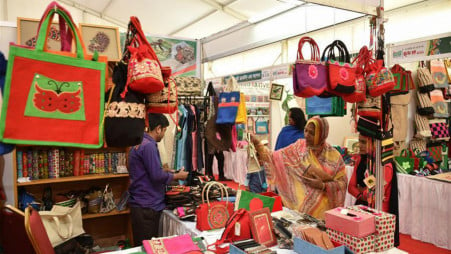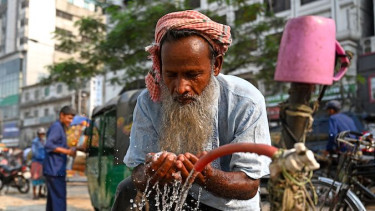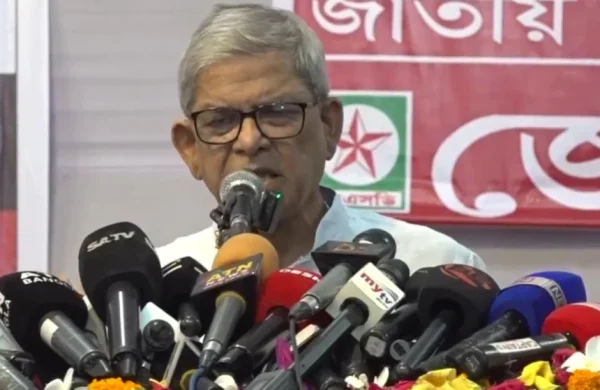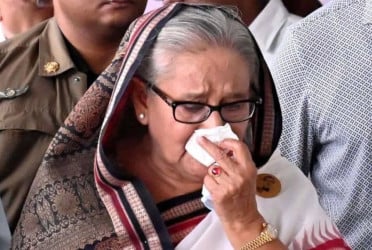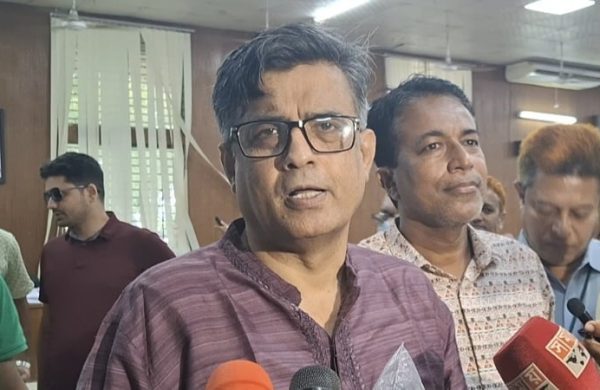Rangpur region sees surge in malta, orange farming
- Update Time : Thursday, October 30, 2025
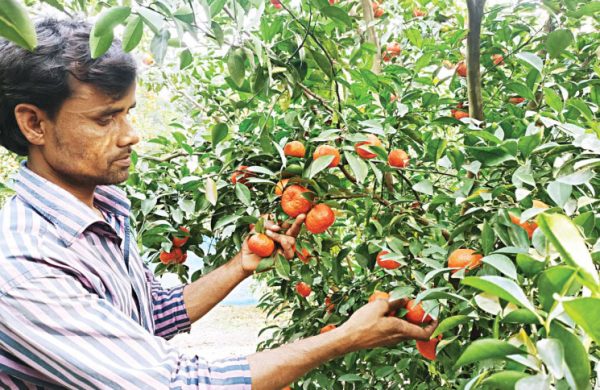
Rangpur Correspondent:
In the northern districts of Rangpur, Lalmonirhat, Kurigram, Gaibandha, and Nilphamari, orchards once dominated by mango, banana, and litchi are now increasingly filled with malta and orange trees. Green maltas and bright oranges are becoming a common sight, signalling an agricultural shift that is boosting incomes for growers and offering cheaper fruits to local consumers.
According to local officials, the greater Rangpur region had only 40 orange and malta orchards a decade ago. Currently, it has about 240, accommodating roughly 240,000 trees of China, Darjeeling Mandarin, and Darjeeling Nagpuri varieties. Each tree produces 40 to 50 kilogrammes of fruit annually. After accounting for production costs, farmers earn around 60 percent profit.
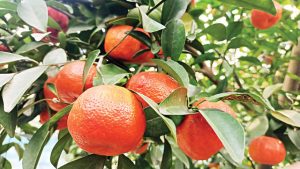
Photo: Collected
The growth is striking compared with a decade ago. According to Department of Agricultural Extension (DAE) data, in the fiscal year (FY) 2014-15, Rangpur, Gaibandha, and Nilphamari did not cultivate any oranges or maltas. Kurigram and Lalmonirhat produced 16 tonnes of oranges and 10 tonnes of malta. In the fiscal year 2022-23, the region produced 159 tonnes of oranges on 18 hectares and 3,903 tonnes of malta on 315 hectares.
Rangpur district alone produced 2,600 tonnes of malta on 130 hectares and 32 tonnes of oranges on two hectares in FY23.
Enamul Haque, a grower from Ulipur upazila in Kurigram, planted 2,800 trees on eight acres eight years ago. “I sell malta at Tk 60-Tk 70 a kilogramme (kg) and oranges at Tk 90-Tk 100 directly from my orchard,” he said. “Traders come from distant places to buy the fruits.”
Enamul spends around Tk 15-Tk 20 lakh annually on maintenance and labour but earns over Tk 1 crore in sales. He also grows ginger in sacks under the fruit trees for additional income.
In Lalmonirhat’s Barakhata village, Khalilur Rahman has been cultivating oranges for a decade. With 450 trees on five bighas of land, he now earns Tk 6 lakh-Tk 7 lakh every year. “I take care of my orchard myself, so costs are low. Orange farming has made me self-reliant,” he said.
In Madhupur village under Kaunia upazila of Rangpur, Nagen Chandra Sen began commercial orange cultivation in 2019 with 150 trees. “I’ve already made a profit, and other farmers are showing interest,” he said.
His neighbour, Monoranjan Sen, has planted malta and orange trees on three acres of land. “The trees have matured and will bear fruit next year,” he said. “It takes a lot of capital to start an orchard. Many farmers want to try but can’t afford the initial investment.”
The boom has not only benefited growers but also consumers and traders.
At Rangpur’s CO Bazar, fruit trader Sofiar Rahman said, “We buy oranges at Tk 90-Tk 100 a kg and malta at Tk 60-Tk 70 from local orchards. After selling in retail, we make Tk 15-Tk 20 profit per kg. Since these fruits are cheaper than imported ones, demand is growing.”
In the BDR Gate area of Lalmonirhat town, Arsad Hossain, another trader, said, “I make Tk 10-Tk 15 profit per kg. Because the prices are lower, sales have increased.”
For consumers, the local produce offers relief from soaring fruit prices.
Haripada Roy, a schoolteacher from Rangpur city, said, “Imported oranges cost Tk 250-Tk 300 a kg, while locally grown ones are available for Tk 100-Tk 130. The size is smaller, but the taste is almost the same.”
Nazir Ali, a rickshaw-puller from Mahiganj, echoed the sentiment, saying, “If local fruits weren’t available, we couldn’t afford imported ones. Now we can finally buy oranges and malta for our families.”
Officials say the region’s success story began with a few hobbyist farmers.
“Eight to ten years ago, commercial malta and orange cultivation in Rangpur was just a dream,” said Sirajul Islam, additional director of the DAE’s Rangpur regional office. “Some farmers planted trees in their homesteads and succeeded. Inspired by them, many others have now set up commercial orchards.”
He added that the DAE is offering training and technical assistance to farmers to improve fruit quality and expand production.
About 70 percent of the locally produced malta and oranges are sold within the region, with the remaining 30 percent sent to other parts of the country.
While Rangpur is witnessing growth in both malta and orange cultivation, at the national level, orange production has fallen over the same period. However, malta has gained immense popularity across the country.
In FY15, Bangladesh produced 39,046 tonnes of oranges on 4,154 hectares and 3,916 tonnes of malta on 555 hectares. By FY23, orange production had declined to 21,303 tonnes on 2,633 hectares, while malta production surged to 69,981 tonnes on 6,921 hectares.
Outside Rangpur, Rangamati produced 12,326 tonnes of malta on 1,262 hectares and 14,801 tonnes of oranges on 1,566 hectares, with Bandarban leading cultivation in both categories. Barishal also produced 10,879 tonnes of malta in FY23.



